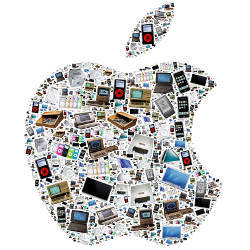Remember back in simpler times when online advertising was just web and email?
While marketing was much simpler, the opportunities were also very limiting. You essentially could only reach the user while they were on their computer – and even then, countless other emails and ads were competing for their attention.
Fast-forward to today and we now have more channels than ever with which to reach prospects: podcasts, digital television, native ads, remarketing, social media, push notifications, webinars, etc.
But with so many opportunities comes the dire need to formulate a plan to be able to wrangle it all and not lose your brand’s voice in the process.
So how do you do it?
Let’s take a closer look into how to create a strong foundation that resonates with your customers (and helps you stay sane).
The Multi-Channel Customer Conundrum
A study from SAP showed that multi-channel (also known as omnichannel) is paying off – big.
86% of those surveyed reported that their multi-channel efforts were leading to increased consumer and customer expectations Eighty-six of those surveyed also agreed that investing in omnichannel clearly outweighs the challenges it presents.
Nearly 75% of those same respondents agreed that this type of approach leads to an increase in sales, while 64% noted increased customer loyalty and 62% found a competitive advantage respectively. Over half of those surveyed reported a better customer experience.
With that being said, however, only 16% revealed that they were meeting all business and customer analysis needs surrounding the customer experience using their multi-channel approach. When not even a quarter of high-level executives are struggling – you know there’s a disconnect.
Of course, you can’t just pile on more channels and hope for better results.
And as marketing evolves online, this is what many companies will do. It’s a race to see how much you can wring out of various methods and channels before they become too saturated. But where’s the foresight in that?
Create a Unified Presence
The first step in taming the multi-channel monster is to decide on a unified approach.
This is the single-handedly biggest change you can make that will ripple out and affect all of the other departments and campaigns under it.
Back in the 1990s, people wouldn’t be caught dead with an Apple computer if they could avoid it. Today, people can’t get enough of Apple or their products – often waiting in line for weeks for the next big release.
And just look at how Apple reinforces that feeling of excited anticipation. Whether it’s through iTunes, the App Store, or the Apple Store itself, every customer touch point lends itself to that unifying experience of “must-have tech”.
But I get it – you’re not Apple. You don’t have millions to invest in modernizing your equipment. Does that mean omnichannel is out of reach for the rest of us?
Absolutely not. But it does mean we have to approach things a little more conservatively.
Prioritize Your Channels
Since you can’t be everything to everyone at the same time, you have to prioritize which channels make the most sense to you and your business.
But don’t just look at channels from a profit standpoint (that’s important too, but it’s not the only criteria you should measure). Look at things like:
- How easy is it for the company to deliver the message to its target audience?
- How cost effective is the delivery?
- How likely is it that the customer will buy using this channel?
Gauge your various channels to determine which one is delivering the best quality leads at the lowest cost – that should be your first item of business. There’s no sense in chasing down customers through traditionally expensive mediums like television or radio if they’re not conducive to a purchase being made at that point.
Determine the Right Performance Indicators
The question then becomes – what kind of indicators do we use to see how these various channels are performing?
Radio is different from TV is different from social media is different from postcard mailings.
Many strategists try to find a unifying indicator that they can use across all channels – but that seldom works because you’re reaching people at different stages in the buying cycle.
Every campaign is going to have its own objective, conversion rate, and cost.
The most important part to keep in mind is to not spend money on a campaign that’s providing tepid results at best. So many companies look for ways to put their fingers in every pie, when those pies may not be relevant or even useful to their audience.
By narrowing down your targets to what’s working, you can concentrate more of your resources into dominating that channel and providing the kind of seamless experience your customers long for.
Work with the Right Vendors
There is no “one size fits all” approach in omnichannel.
And the vendors you choose will depend heavily on how far back you have to go to integrate all your customer information. Are we talking about wrangling legacy point-of-sale systems or can we skip the complicated stuff and leverage our digital information quickly?
For traditional brick and mortar stores who have to juggle inventory management with IT know-how and supply chains, there’s no shortage of powerful platforms to do the heavy lifting.
If you’re looking for a more innovative approach, companies like Adaptly and Albert are using human ingenuity and artificial intelligence to calculate, learn from and adapt to various shifts that are par for the course when it comes to multi-channel management.
So as you can see, omnichannel can seem overwhelming at best.
But the payback in terms of revenues, customer loyalty, and reinforced brand messaging are there for those bold companies willing to make a concentrated effort and make that leap.
By creating a singular brand voice along with crafting a plan that puts your best channels first, while measuring the metrics that matter, you’ll be able to make a confident foray into the world of multi-channel – without losing your shirt.
Now It’s Your Turn…
Are you currently leveraging multi-channel marketing initiatives in your business?
How is it working out for you?
Do you think multi-channel marketing still has a ways to go before it can be more mainstream for large and small businesses alike?
Share your experiences with us in the comments below!
About the Author: Sherice Jacob helps business owners improve website design and increase conversion rates through compelling copywriting, user-friendly design and smart analytics analysis.


Comments (8)